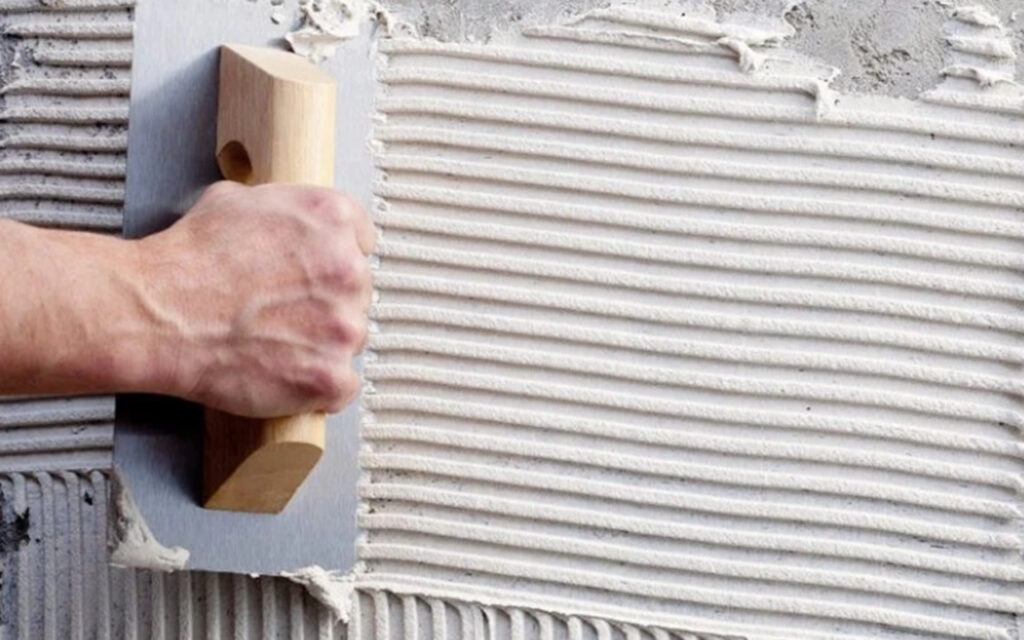Redispersible Polymer powder is usually white, but there are also a few other colors. Its main ingredients are as follows:
Polymer resin: Located at the core of polymer powder particles, it is also the main component of Redispersible Polymer powder, such as ethylene vinyl acetate (EVA), polyacrylate (PAE), etc.
Additives (internal): Play the role of modifying the resin. For example, plasticizers can reduce the film-forming temperature of the resin. Usually, ethylene-vinyl acetate copolymer resin does not need to add plasticizers, and not every Redispersible Polymer powder requires additives.
Protective colloid: A layer of hydrophilic material wrapped on the surface of Redispersible Polymer powder particles. The protective colloid of most Redispersible Polymer powders is polyvinyl alcohol.
Additives (external): Additional materials are added to expand the Redispersible Polymer powder performance further. For example, the super water-reducing agent is added to some flow-aiding rubber powders. Like internal additives, not every kind of additives can be added. Redispersible Polymer powder contains this type of additive.
Anti-caking agent: Anti-caking agent is a fine mineral filler mainly used to prevent Redispersible Polymer powder from caking during storage and transportation and to facilitate the flow of Redispersible Polymer powder (dumping out of paper bags or tankers).
2. Preparation process of Redispersible Polymer powder
The production of Redispersible Polymer powder is mainly divided into two steps: polymerization and emulsion drying.

(1)Polymerization of emulsion
The monomers used in emulsion polymerization determine the type of Redispersible Polymer powder. The polymer monomers that prepare Redispersible Polymer powder are mainly ethylenically unsaturated monomers, including various vinyl and acrylic esters. Since Redispersible Polymer powder is used primarily in building bonding materials and adhesives, vinyl acetate polymer has the advantages of low price, high bonding strength, non-toxic and harmless, safe and convenient production and use. It is used in the most considerable amounts in polymer emulsions in construction bonding materials and adhesives.
Generally speaking, there are no particular restrictions on the polymerization method of the emulsion used to prepare Redispersible Polymer powder. Various emulsion polymerization methods using water as the dispersion medium can be used, but most recommend continuous or semi-continuous emulsion polymerization. Generally, protective colloids and anionic or nonionic emulsifiers or no emulsifiers are used. The solid content of the polymer emulsion obtained by preparing Redispersible Polymer powder is typically 40% to 60%, which can be adjusted appropriately according to the dryer’s performance, product performance requirements, and other additives needed before drying. For ethylene-vinyl acetate, Copolymer emulsion should be diluted to less than 40%. To improve the dispersibility of the Redispersible Polymer powder and prevent agglomeration during drying and storage, protective colloids or surfactants (emulsifiers) should generally be added before drying. The Redispersible Polymer powder has strong hydrophilicity and sensitivity to alkalis. The most commonly used protective colloid is partially hydrolyzed polyvinyl alcohol. Polyvinyl alcohol contains many hydroxyl groups and has poor water resistance.
Moreover, vinyl acetate polymer has poor water resistance in boiling water due to its polar ester and carboxyl groups. In Redispersible Polymer powder containing PVA and carboxyl groups, multivalent metal salts can be added to improve its water resistance, especially hot water resistance, because PVA and carboxyl groups can react with metal salts and become insoluble in water. Aldehydes can also be added to make PVA acetal and reduce its water absorption in the emulsion. In addition to PVA, other protective colloids with good water resistance can also be used to ensure the product’s water resistance, such as polyacrylic acid, and modified polyacrylic acid.
Before the emulsion is dried, other additives, such as defoaming agents, thickeners, and hydrophobic agents, can be dried together with the emulsion dispersion.
(2) Drying of emulsion
Spray drying is the most commonly used drying method for preparing Redispersible Polymer powder. Vacuum drying and freeze-drying can also be used.

Drying is a problematic point in the preparation of Redispersible Polymer powder. Not all emulsions can be converted into Redispersible Polymer powder because these thermoplastic polymer emulsions that can form films or even become sticky at room temperature must be processed at high temperatures and transformed into a free-flowing powder. The diameter of the emulsion particles in the emulsion dispersion is about a few microns. During the spray drying process, the polymer particles will agglomerate, so the particle size of the Redispersible Polymer powder is usually between 10 μm and 500 μm. We studied it from a scanning electron microscope (SEM). ), it can be seen that the latex particles condense to form a hollow structure. After the Redispersible Polymer powder is redispersed, the diameter of the polymer particles is generally between 0.1 μm and 5 μm. Since the Redispersible Polymer powder is dispersed, the latex particle size distribution of the redispersion liquid is the primary quality indicator of the Redispersible Polymer powder. One, it determines the binding ability of the Redispersible Polymer powder and its various effects as an additive. Therefore, appropriate dispersion and drying methods should be selected to try to make the particle size of the redispersed liquid the same as that of the original emulsion. Distribution to ensure that the properties of the redispersion are similar to those of the original emulsion.
Most Redispersible Polymer powder use a co-current spray drying process; that is, the direction of movement of the powder is consistent with the hot air. Some also use a counter-current spray drying process, and the drying medium generally uses air or nitrogen. Since polymer particles are prone to problems such as coagulation and discoloration during spray drying, it is necessary to strictly control the emulsion additives, dispersion conditions, emulsion solid content, spray form, spray pressure, droplet size, inlet and outlet hot air temperature, wind speed, and other processes factor. Generally speaking, the effect and heat utilization rate of double or multiple nozzles is better than that of a single nozzle. Generally, the pressure of the nozzle is about 4×105Pa, the hot air inlet temperature is between 100℃~250℃, and the outlet temperature is about 80℃. Adding kaolin, diatomaceous earth, talcum powder, and other inert mineral anti-caking agents can prevent caking. However, if added before drying, the anti-caking agent may be wrapped into microcapsules by polymers and lose its effect. The emulsion is sprayed separately from the top of the dryer, but it is easily lost with the airflow and crusted on the dryer and delivery pipes. A better way to add it is to add it in two parts and spray one piece into the upper part of the dryer with compressed air. , the other part enters with cold air at the bottom. To prevent agglomeration, the remaining portion can be saponified during emulsion polymerization when the polymerization reaches 80% to 90% or melamine-formaldehyde condensate can be added to the emulsion. Or use some emulsifier lotion.



